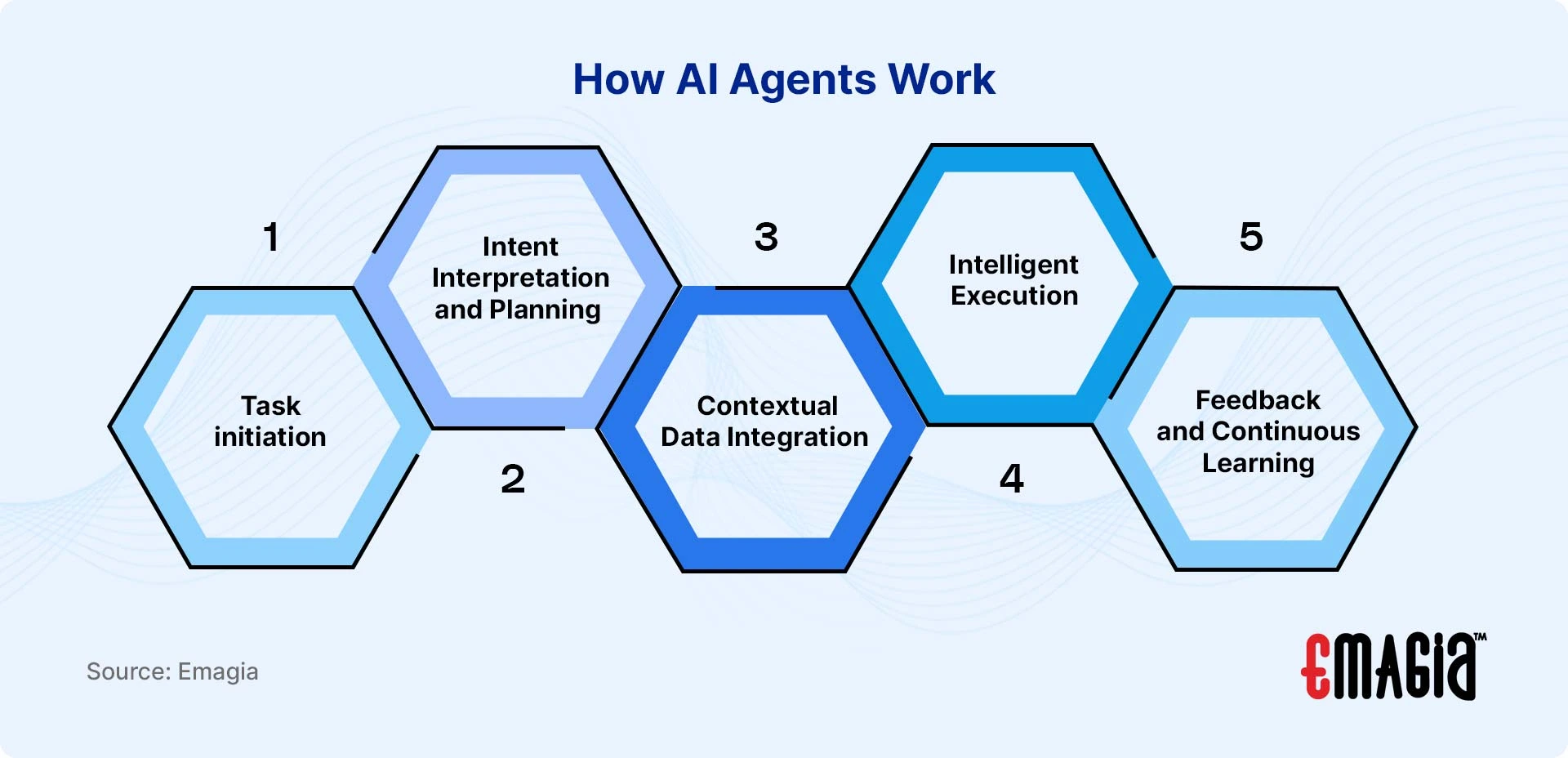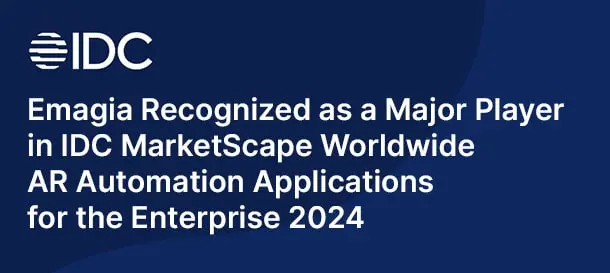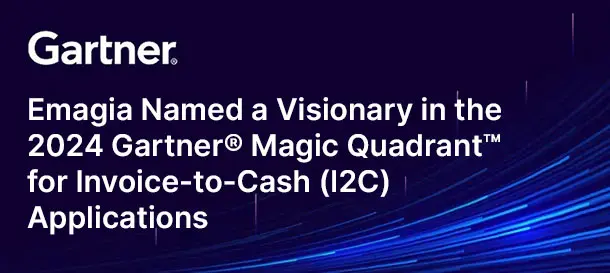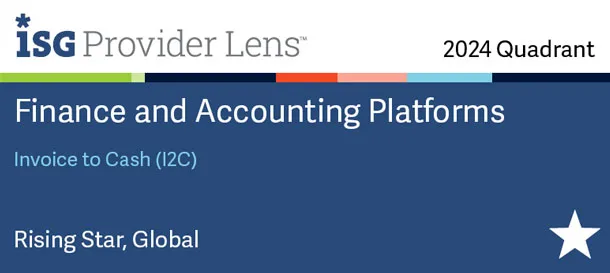Artificial Intelligence (AI) models are evolving at an unprecedented pace, and the latest evolution making waves is Agentic AI. It is not just a buzzword; it represents a foundational shift in how AI interacts with tasks, systems, and decision-making.
Gartner predicts that by 2028, Agentic AI will be integrated into 33% of enterprise software applications, a dramatic increase from less than 1% in 2024, with the goal of 15% of day-to-day work decisions being made through AI Agents.
To frame the discussion, it’s helpful to consider the types of AI many finance teams unknowingly already encounter in their day-to-day lives. Tools like Grammarly redefine written communication and fall under the category of Assistive AI. Platforms such as ChatGPT, which help users draft content, generate ideas, or simplify complex topics, represent Generative AI. While both are valuable, they operate reactively, requiring user input in the form of prompts or instructions to deliver results.
Now, the latest autonomous finance advancement (Agentic AI) allows for models that can proceed to the next step without human interaction. Agentic AI Agents don’t just respond to commands; they pursue a goal, adapt to changing variables, and learn from outcomes based on user-set parameters.
In short, Agentic AI goes beyond just assisting with your tasks when prompted and can proactively execute multi-step tasks, adapt to changing conditions, and improve performance over time, without needing human direction at every stage. While Assistive and Generative AI act as tools, Agentic AI acts more like a collaborator, capable of making context-aware decisions and course-correcting on the fly.
While Agentic AI provides the broader framework for autonomous decision-making and task execution, the actual units within this framework are referred to as AI agents. These agents are purpose-built models designed to carry out specific objectives with a degree of autonomy, often by reasoning through a goal, breaking it down into subtasks, and interacting with other systems and data sources to achieve the intended outcome.
How AI Agents Work
- Task Initiation: At the core of an AI agent’s functionality is its ability to translate objectives into actionable workflows. The process typically begins with a task provided by a human or an automatically generated prompt from another system.
- Intent Interpretation and Planning: The agent then interprets the instruction, extracts key elements, and uses internal reasoning models to understand the task’s scope and context. This planning stage enables the agent to divide the objective into manageable subtasks, each with a clear path toward execution.
-
Contextual Data Integration: Once the subtasks are mapped, the agent identifies relevant data, constraints, and variables. It may integrate information from external sources such as APIs, internal databases, or real-time market feeds to inform its decisions.
- In a financial setting, this may involve updating risk models, macroeconomic indicators, or liquidity data to reflect current market conditions.
- Intelligent Execution: The agent then moves to the execution phase. This could involve sending out meeting invites optimized for participants’ availability, reconciling accounts across platforms, or rebalancing an investment portfolio based on shifting economic conditions.
- Feedback and Continuous Learning: Execution is not the endpoint, however. After completing the task, the agent absorbs feedback, whether from human review, data outcomes, or performance metrics, and uses it to reassess and refine its approach. Over time, the agent’s memory stores patterns, exceptions, and responses that can improve future performance.

What truly sets Agentic AI apart is its feedback-driven learning loop. Unlike one-off models that repeat the same logic each time, AI agents in Agentic AI evolve and adapt over time. They learn what works, adapt to unique cases, and become more efficient with repetition and data exposure. This continuous improvement aspect is a key advantage of Agentic AI.
Single-Agent vs. Multi-Agent Systems
While many use cases can be addressed by a single AI agent, more complex workflows often require coordination among multiple agents. In a multi-agent system, each agent specializes in a different aspect of a broader task. These agents may communicate with each other and share context. In some cases, they don’t even need a direct human prompt: one agent’s output can serve as another’s input, enabling an end-to-end execution chain across departments or systems.
In a collections scenario, a multi-agent system can streamline the entire process. For instance, an account monitoring AI agent may continuously scan aging reports and flag overdue invoices. Once an issue is identified, it can prompt a customer engagement AI agent to send personalized payment reminders, adjusting them based on the customer’s payment history and responsiveness. If the customer remains unresponsive, the dispute resolution agent can step in or escalate to a human collections specialist for complex decision-making. The entire process can unfold without human intervention, but always under the watchful eye of human oversight, ensuring control and accountability.
Why This Matters to Finance Leaders
For finance leaders, the rise of Agentic AI is more than a technical development; it’s a strategic opportunity to streamline high-impact financial operations. One of the most compelling applications lies in core areas of Order-to-Cash processes such as credit risk analysis, collections prioritization, cash application, and payments reconciliation.
Imagine AI agents that not only pull real-time credit reports but dynamically assess customer risk based on payment trends, macroeconomic signals, and transaction history. Or agents that prioritize collections activities based on expected recovery likelihood, automate follow-ups, and resolve disputes by referencing customer contracts or invoice trails. On the cash application side, agents can match payments to invoices with high accuracy, even across fragmented data systems, while learning from exceptions to improve future matches. These use cases are not hypothetical—they’re already in development and adoption across advanced finance teams.
The potential benefits are significant: increased efficiency, real-time responsiveness, reduced manual intervention, and more time for strategic decision-making. However, realizing this value requires not just deploying Agentic AI tools, but also rethinking workflows, data pipelines, governance, and trusting the right cash application to deploy these autonomous agents safely.
Agentic AI marks a shift from AI as a passive assistant to AI as an active, autonomous participant in business operations. For finance leaders, this evolution presents an opportunity to unlock operational agility, strategic foresight, and continuous improvement. The challenges and opportunities reside in identifying the proper use cases for your financial teams.





